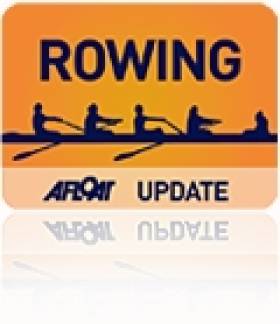Displaying items by tag: Andrew Ashman
Clipper Race Fleet Competing In Honour Of Lost Crew Member
Close competitive racing in the first leg of the Clipper Round the World Yacht Race from London to Rio has been overshadowed this week by the death of a crew member in what appears to be a tragic accident.
Andy Ashman, a paramedic from South East London was an experienced sailor and described as being typical of the 'Corinthian' Clipper Race spirit. He was an inspiration to the rest of his team of amateur sailors from all walks of life.
While the team aboard IchorCoal went ashore at Porto, in northern Portugal, the Clipper Race fleet paid their respects, flew their Red Ensigns at half mast, and raced on as the most fitting tribute.
At the front of the fleet the duel continued between GREAT Britain and LMAX Exchange. But the two have now split with LMAX Exchange taking a clear lead of more than 160 nautical miles closer to the finish in Rio after taking better winds further east, racing through the Canary Islands and then close to the West Saharan coast.
The leaderboard has seen some considerable changes over the last 24 hours, as the teams made their tactical decisions on whether to pass between the Canary Islands and take more of an inshore route, or leave them to port.
As a lasting tribute the Atlantic Ocean Sprint, a short section of the race track off the Brazilian coast where extra points are awarded for the fastest team between two points, will be named in Andy's honour. The fastest team will receive a special trophy, the 'Andy Ashman Memorial Plate' in Rio and it will continue to be awarded in future editions of the Clipper Race.
As at 1400 UTC (1500 UK/BST) the fleet positions were as follows:
1. LMAX Exchange - 3542 nm to finish
2. GREAT Britain
3. Derry~Londonderry~Doire
4. Garmin
5. Qingdao
6. Da Nang - Viet Nam
7. ClipperTelemed
8. Unicef
9. PSP Logistics
10. Visit Seattle
11. + Mission Performance
12. IchorCoal
Tragic Death Aboard Clipper Race Yacht
#ClipperRace - A British crewman on a yacht competing in the Clipper Round The World Race has died after an onboard accident days into the first leg.
Andrew Ashman (49) from Orpington in Kent was knocked unconscious by the mainsheet while reefing the main sail on the Plymouth-registered yachr CV21, racing as IchorCoal.
The yacht was sailing in moderate seas with a strong breeze building to Force 6 some 120 nautical miles off the Portuguese coast at the time of the accident, just after midnight in the early hours of this morning (Saturday 5 September).
Ashman, an experienced yachtman and paramedic, was given immediate medical assistance and attempted resuscitation but failed to regain consciousness.
Skipper Darren Ladd reports that the boat linked immediately by satellite phone to the race's remote medical team in Halifax, Nova Scotia, where a doctor provided additional advice and guidance during the emergency.
CV21 is now diverting to northern Portugal to a suitable marina in the Porto area, yet to be confirmed, and is expected to arrive in the early hours of tomorrow morning (Sunday 6 September).
“This is extremely sad news and my heart goes out to his bereaved family and friends, and to his fellow crew who have come to know Andrew with great affection during his training and the early days of this race," said Clipper Race founder Sir Robin Knox-Johnson on news of the tragedy.
"Safety is always our utmost priority, as our record shows, and we shall investigate the incident immediately in full cooperation with the authorities.”
The deceased was due to participate in the current race to Brazil, the Southern Ocean and USA coast-to-coast legs of the Clipper 2015-16 Race.





























































